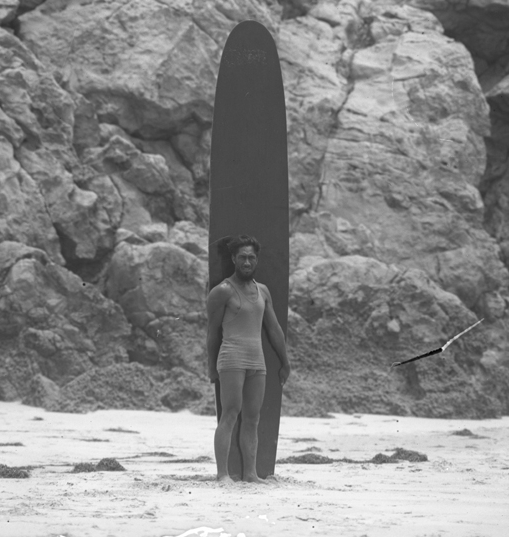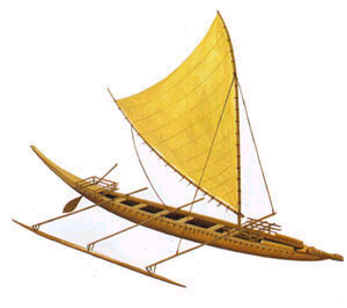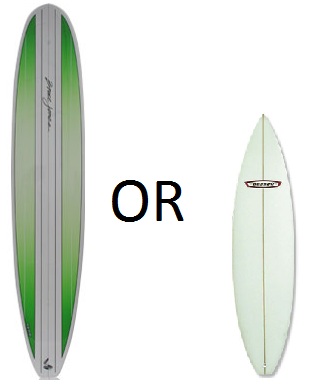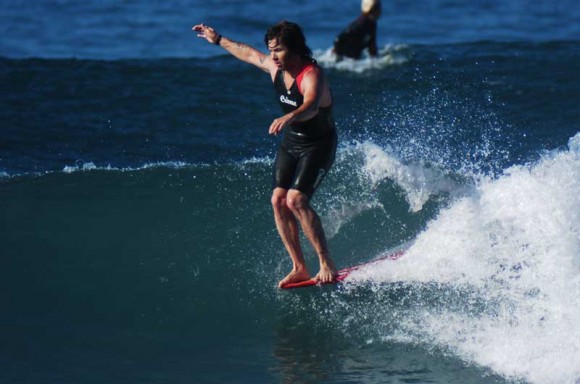In my last post, I talked about big wave surfing and how it differed from short board surfing. In this post, I am going to go into detail about long board surfing and how that differs from short board surfing. Long board surfing is the original type of surfing. It originated in French Polynesia and the islands of the South Pacific close to three thousand years ago. The sport migrated from island to island across the South Pacific with the people that migrated from place to place finding new islands. Surfing was generally a source of entertainment for the young people of these civilizations, however, when it made its way to Hawaii, it became the sport of the older citizens.
Above is a map of the South Pacific migrations. Surfing followed the same trend. Going off of surfing for a second, can we admire how far these groups traveled with only a canoe that looks like this.
These people traveled thousands of miles in canoes like this using maps that relied entirely on the stars and the moon. The boats had a sail, but generally they were powered by oars and the men on the boat.
The long boards used today vary greatly from the long boards used by the original surfers. The original long boards were made of pieces of heavy, buoyant wood. These boards could weigh up to 150 pounds.
Here is a picture of surfing great Duke Kahanamoku and his long board. This picture was taken in 1920.
The culture behind surfing then was very laid back. Surfers surfed because they could. There was very little hatred in the water and everyone was given the opportunity to surf. This laid back mentality has not changed for long boarders. Long board surfing remains a much more laid back style of surfing compared to short board surfing. Short board surfing is always a contest. No one wants to share waves and the surfers are generally very intense. Long boarding always has been and remains the exact opposite
Long boards are generally larger than eight feet long and are characteristic of having one fin compared to a short boards three fin set up. They are also much thicker than short boards and have much more rounded points. Here is a picture for comparison.
The long board is on the left. The short board is on the right. Notice the long board has a much rounder nose, whereas the short board has a much more pointy nose.
Long boards require less intense waves than the waves short boards require. The waves are usually much flatter and break much slower than short boarding waves. This allows long boarders to perform tricks that involve walking up and down the board, such as hanging ten. (Hanging ten is walking to the front of the board and putting all ten of your toes off of the board, hence the term “hanging ten”). These tricks require a much heavier board that will not move when the surfer walks up and down the board. As I have said before, short boarding waves are much faster and steeper. The tricks you perform on short boards are also much faster and therefore require much quicker lighter boards.
This is an example of someone hanging ten. Here is a video of long board surfing.
Long boards are able to catch much weaker waves due to these characteristics. This makes it the ideal board for beginners. Everyone I know, including myself, started on long boards. They are much easier to stand up on compared to short boards. They also make waves a lot easier to catch. One reason for this is that they are able to harness the energy of the wave much easier. Another reason is that because of the single fin, long boards are able to catch more waves than short boards are able to catch.





I have no idea surfing originated so long ago! I like how you phrased it as “very little hatred in the water” its extremely true, yet poetic. Is it harder to steer a long board? This post had a lot of cool information from the history of long boarding that I found extremely interesting.
What really surprised me the most was how large the original long boards were (and heavy!) It seems that long board surfing is more leisurely than the other ones you mentioned. I am wondering if this type of surfing purely for recreational purposes, or if there are any commercialized versions of it? I’d also be interesting in knowing how heavy long boards vs. short boards are! 🙂
I also enjoyed reading about the history of surfing. I find it fascinating how activities, ideas, cultural exchange, etc. occur and I appreciate you putting the origins of surfing in this post. It’s helpful in giving an in-depth perspective of how surfing has developed!